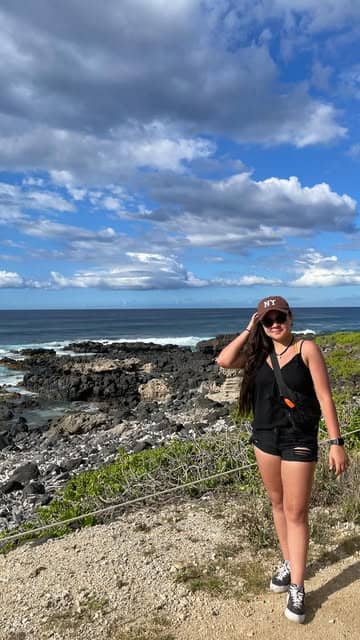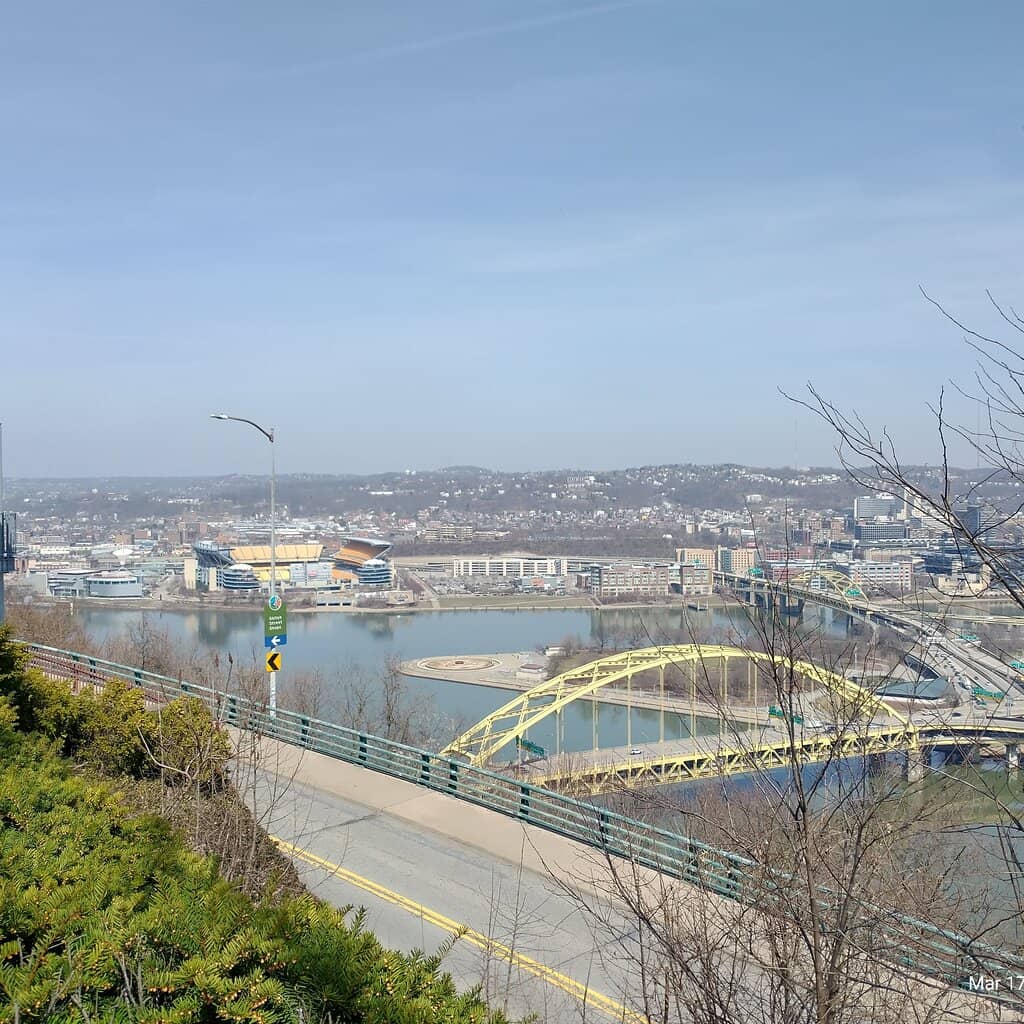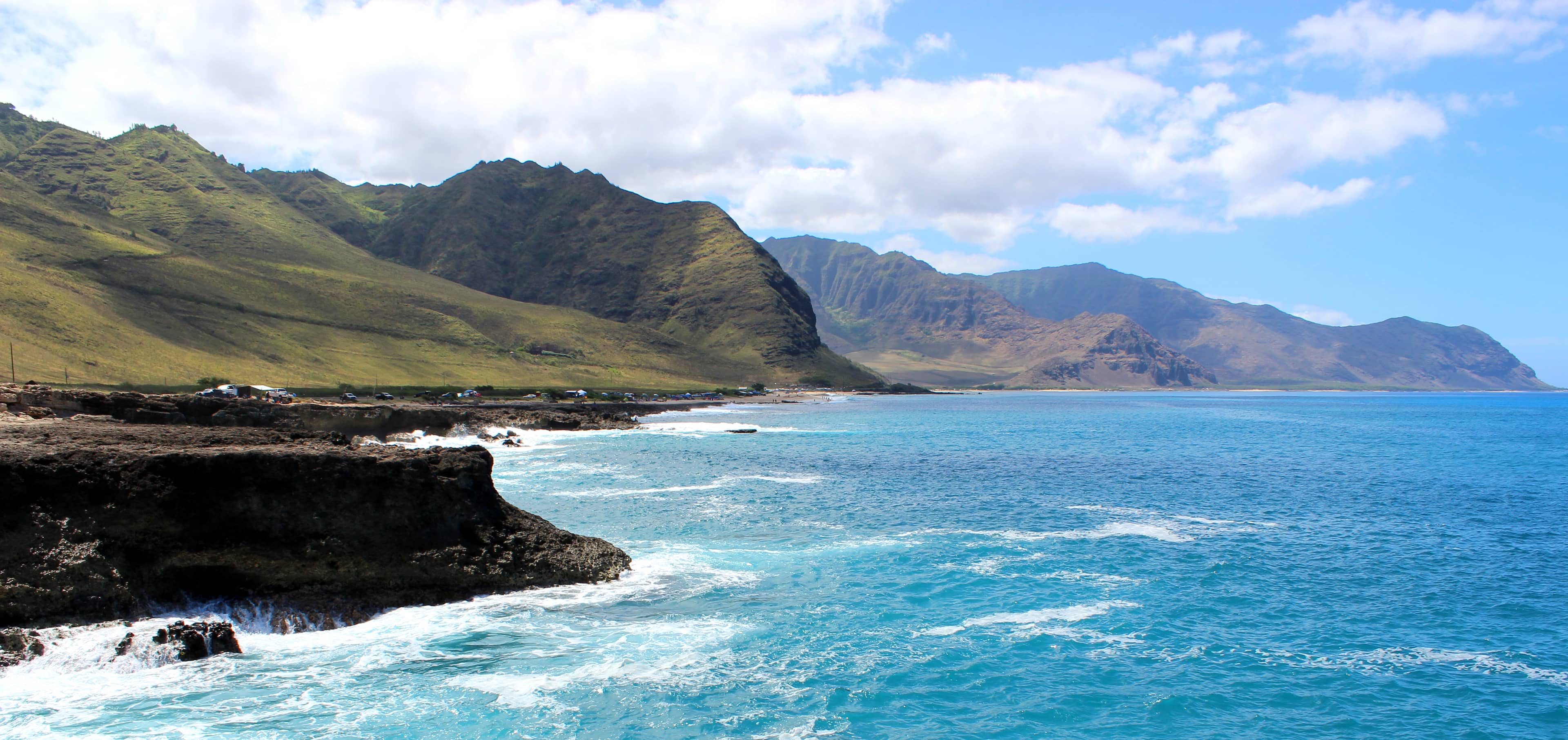
Ka‘ena Point State Park Honolulu
Remote Oahu tip with rugged lava shores, stunning hikes, and a vital sanctuary for albatross and monk seals.

Highlights
Must-see attractions

Social
From TikTok & Reddit
Best Time
Beat the heat and crowds

Ka‘ena Point State Park Honolulu
Best Time
Beat the heat and crowds

Highlights
Must-see attractions
Remote Oahu tip with rugged lava shores, stunning hikes, and a vital sanctuary for albatross and monk seals.
"It's the most remote part of O'ahu and it's amazing."

Bring plenty of water! 💧
It gets very hot and there's no shade. Stay hydrated on your hike.
Wear sturdy hiking shoes 👟
The terrain is rocky and uneven. Good grip is essential for safety.

Highlights
Discover the most iconic attractions and experiences

Albatross Sanctuary
Past the predator fence
Witness Laysan albatross and other seabirds in their natural nesting grounds. A truly unique wildlife experience.

Rugged Lava Shoreline
Coastal areas
Explore dramatic lava formations and tide pools teeming with marine life. The raw beauty of the coast is breathtaking.

Panoramic Ocean Views
Along the hiking trails
Stunning vistas of the Pacific Ocean, rugged coastline, and distant mountains. Perfect for photography and quiet contemplation.
Plans like a pro.
Thinks like you
Planning Your Visit
Prepare for the Elements
Access & Permits
Best Times
Insider Tips
from TikTok, Instagram & Reddit
Bring plenty of water! 💧
It gets very hot and there's no shade. Stay hydrated on your hike.
Wear sturdy hiking shoes 👟
The terrain is rocky and uneven. Good grip is essential for safety.
Worth visiting ke'anae point from Kailua?
Protect yourself from the sun ☀️
Reef-safe sunscreen, a hat, and sunglasses are a must.
Look for wildlife! 🦭🐦
You might see monk seals, albatross, and other seabirds.
Hiking to Ka’ena point - south or north start?
Tips
from all over the internet
Bring plenty of water! 💧
It gets very hot and there's no shade. Stay hydrated on your hike.
Wear sturdy hiking shoes 👟
The terrain is rocky and uneven. Good grip is essential for safety.
Protect yourself from the sun ☀️
Reef-safe sunscreen, a hat, and sunglasses are a must.
Look for wildlife! 🦭🐦
You might see monk seals, albatross, and other seabirds.
Secure your valuables 🚗
Car break-ins can occur. Don't leave anything important in your vehicle.
Check road conditions 🛣️
Roads can be closed due to weather. Check the DLNR website for updates.
What Travellers Say
Reviews Summary
Visitors rave about Ka'ena Point's remote beauty, unique wildlife encounters, and stunning coastal views, often describing it as a magical, untouched corner of Oahu. While the hike is generally easy, the intense sun and lack of shade require preparation. Some caution is advised regarding car break-ins at trailheads.
"A pleasant walk down a 4x4 road past local fisherman surf casting and camping. The views of the coastline and mountains was great. Once at the point it was amazing to walk among the albatross chicks and peer into the tide pools. The neatest was being able to view the North and west shores of Oahu. Very beautiful."
Tim Munns
"Wow so amazing! If you could take the time to go there, definitely do! There's a gate to fence off mongoose so it's a bird sanctuary in there past the fence. So many different types of birds that aren't afraid of people. Albatross doing mating dance, baby albatross squeaking, etc. reminds me a lot of the Galapagos.
The O'ahu west coastline was also visible at the pillbox. It's such a nice spot to sit and enjoy some snacks and the sunset. It's too bad that the sun set behind the clouds, but we got beautiful views of everything. We just soaked it all in. It's the most remote part of O'ahu and it's amazing.
If you don't wanna walk all the way to the west, you can drive but you'll need to apply for a permit and have a vehicle with high clearance and decent tires. It's ok without a 4wd or awd if it's not raining. It's dry mud and lots of small to medium sized rocks. The path was mostly visible with tire tracks. But just in case it rains, and it can come down heavily, it's best to go with an awd or 4wd because you can get stuck in mud, and also skid from wet mud so drive slowly so the tires have good grip of the road. Doable to drive in rainy weather and in the dark too. I did it :-) Overall fun off-roading experience! However, driving back out can be tricky as there are multiple roads sometimes. Just make sure you hug the mountain when leaving.
It's so worth the visit. It didn't feel like O'ahu at all. It's a special magical place on the most populated Hawaiian island. Aloha!"
Rebecca Tsang
"A beautiful park where you can hike along the rocky coastline of northwestern Oahu. There’s parking on the southwest entrance and the northeast entrance, but there’s no road between the two so the only way to reach the point is to walk. It’s a great hike, easy with virtually no elevation gain, but lots of great sites of the coast, mountains, and (if you’re lucky) wildlife. There’s a predator fence once you get about a half mile from the point, intended to keep out rats, cats, and other opportunists from getting to the nests of the shorebirds, which you’ll almost certainly see. Beyond that, there are some sand dunes and then rocky tide pools. There were a handful of kids and their parents swimming in them, so bring along swimming gear in case you want to cool off before your hike back!"
Ben Roth
What People Like
What People Dislike
Frequently Asked Questions
🚇 🗺️ Getting There
Ka'ena Point State Park is located on the western tip of Oahu. From Honolulu, you can drive towards the west side via H-1 West, then take the exit for Farrington Highway (HI-99). Continue on Farrington Highway until you reach Makaha. The road to Ka'ena Point from the west side is largely collapsed and not suitable for driving. You can park at the trailhead parking lot near Makaha and hike or bike the rest of the way. Alternatively, you can access it from the North Shore side via Waialua and Mokuleia, but this also requires a permit for vehicular access and a high-clearance vehicle.
Driving to Ka'ena Point is restricted. The roadbed from Makaha to Ka'ena Point has collapsed into the ocean, making it impassable for most vehicles. Vehicular access from the North Shore side requires an annual permit, typically for Oahu residents, and a vehicle with good ground clearance. Standard sedans or Priuses are not suitable for the off-road conditions.
Yes, biking to Ka'ena Point is a popular option, especially from the west side trailhead. The path is a former roadbed, so it's generally manageable for most bikes, though it can be rocky and uneven in places.
Accessing Ka'ena Point from the North Shore (Mokuleia side) is possible, but vehicular access requires a special permit and a vehicle with high clearance. Many visitors choose to hike or bike this route as well.
There are no official shuttle services to Ka'ena Point. Some visitors have suggested using carpooling apps like Meetup to find groups heading there.
🎫 🎫 Tickets & Entry
While general access for hiking and biking doesn't require a permit, vehicular access on the off-road sections of Ka'ena Point State Park requires an annual permit, which is typically only available to Oahu residents. These permits are limited.
Ka'ena Point State Park is generally open from sunrise to sunset. However, specific sections or roads may be closed due to weather or maintenance. It's advisable to check the official DLNR website for any current closures or updates.
There is no entrance fee to visit Ka'ena Point State Park for hiking or general access. However, if you obtain a permit for vehicular access, there might be associated application fees.
Visitors are encouraged to pack out everything they pack in. There are specific rules regarding protected areas within the park, especially around the bird sanctuary. It's important to respect the roped-off areas to protect the nesting seabirds.
Camping is not permitted within Ka'ena Point State Park. The park is primarily for day use, hiking, and wildlife viewing.
🎫 🥾 Onsite Experience
The hike to Ka'ena Point is generally considered easy with virtually no elevation gain. It follows a former roadbed, which can be rocky and uneven. The total distance is about 6 miles roundtrip from the west side trailhead.
Ka'ena Point is a crucial nesting ground for Laysan albatross and other seabirds. You might also spot Hawaiian monk seals hauled out on the beaches. During whale season (December to March), humpback whales can be seen offshore.
Yes, there are some tide pools and small swimming areas along the coast, particularly on the west side. However, be cautious of the ocean conditions, as they can be rough.
Ka'ena Point offers excellent stargazing opportunities due to its remote location and low light pollution. Parking at the trailhead after dark is possible, and the views of the night sky are spectacular. A sturdy tripod is recommended for photography.
It's crucial to maintain a safe distance from all wildlife. Do not approach, feed, or disturb monk seals or nesting birds. Observe them respectfully from afar to ensure their safety and well-being.
📸 📸 Photography
The entire coastline offers stunning photographic opportunities, from the rugged lava formations to the panoramic ocean views. The albatross sanctuary is a prime spot for wildlife photography, and the sunsets can be spectacular.
A wide-angle lens is great for capturing the expansive landscapes. For wildlife, a telephoto lens is beneficial. If you plan on stargazing or capturing long exposures, a sturdy tripod is essential, especially as it can be windy.
While the park itself is generally safe, it's always wise to be cautious. Be mindful of your surroundings, especially if you're alone. If you're concerned about car break-ins, avoid leaving any gear unattended in your vehicle.
The 'golden hours' around sunrise and sunset offer the most dramatic lighting for landscape photography. Midday can be harsh, but it's ideal for spotting wildlife.
Drone usage is generally restricted in Hawaii's state parks to protect wildlife and ensure visitor safety. It's best to check the official DLNR regulations for Ka'ena Point State Park before flying a drone.
For Different Travelers
Tailored advice for your travel style
👨👩👧 Families with Kids
Be prepared for the sun and heat, as there is very little shade. Consider bringing swimming gear for the kids to cool off in the tide pools. Due to the remoteness, it's best to pack all necessary snacks and drinks. Also, be mindful of the car break-in warnings if you're parking at a trailhead; keep valuables out of sight or take them with you.
🚶♀️ Hikers & Nature Enthusiasts
The remoteness of Ka'ena Point is a significant appeal for nature lovers. It's a place to immerse yourself in a protected ecosystem and witness wildlife that is less accustomed to human presence. Remember to practice Leave No Trace principles, stay on designated paths, and respect the wildlife. The opportunity for stargazing after sunset adds another layer of appeal for those who appreciate the natural world.
📸 Photographers
For landscape photographers, the 'golden hours' around sunrise and sunset offer the most dramatic lighting. Wildlife photographers will benefit from telephoto lenses, while wide-angle lenses are perfect for capturing the expansive scenery. If you plan on stargazing photography, a sturdy tripod is essential due to the potential for wind. Be mindful of the sun's intensity during the day and protect your gear from the elements.
Deep Dives
In-depth insights and expert knowledge
Wildlife Encounters at Ka'ena Point
Access to the core sanctuary area is protected by a predator fence, designed to keep out invasive species like mongooses and rats that threaten ground-nesting birds. Beyond the fence, you'll find a unique ecosystem where the wildlife is less accustomed to human presence. Remember, observing these animals in their natural habitat is a privilege, and it's essential to follow all guidelines to ensure their conservation. Binoculars can greatly enhance your viewing experience from a safe distance.
Navigating Access: Hiking, Biking, and Permits
For those seeking to drive, vehicular access is possible from the North Shore side (Mokuleia), but it requires a special annual permit, typically reserved for Oahu residents. Even with a permit, a high-clearance vehicle is recommended, as the road is unpaved, can be muddy after rain, and has small to medium-sized rocks. Standard sedans or even some smaller SUVs may struggle. The roadbed is primarily used by conservation groups for access to seabird protection areas.
It's important to note that car break-ins have been reported at trailheads, so it's advised to leave valuables at home or take them with you. Always check the official DLNR website for the latest information on road closures and permit requirements before your visit.
The Remote Beauty of Ka'ena Point
Many visitors highlight the feeling of being in a truly wild and untouched place, a stark contrast to the more developed areas of Oahu. The coastal hike provides constant visual rewards, with the ever-changing colors of the ocean and the dramatic volcanic landscape. Sunsets here are particularly memorable, painting the sky with vibrant hues.
This remoteness also means limited amenities. There are no concessions or restrooms directly at the point, so come prepared. The lack of development, however, is precisely what preserves its unique charm and makes it such a special destination for those seeking an escape into nature.






Social
from TikTok, Instagram & Reddit